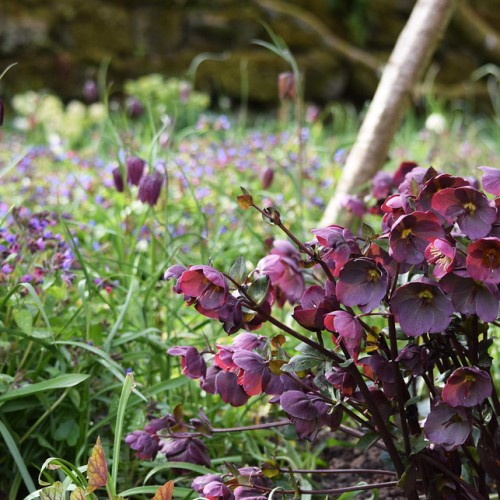
hellebore
Helleborus hybridus 'Pine Knot Best Darks'
Cycle:
Herbaceous Perennial
Watering:
Average
Hardiness Zone:
4 - 9
Flowers:
Flowers
Sun:
Part shade,full shade
Leaf:
Yes
Growth Rate:
Low
Maintenance:
Low
Drought Tolerant:
Yes
Salt Tolerant:
Yes
Care Level:
Medium
watering
For best results, water your Hellebore (Helleborus hybridus 'Pine Knot Best Darks') once every 3 to 4 days during the warmer months (May-July). Water the plant directly at the base of the stem, using a watering can for easy reach and even distribution. When watering, aim to saturate the entire soil and let any excess moisture drain away from the base of the plant, avoiding long periods of standing water. Water your Hellebore in the morning hours—avoiding the heat of the afternoon—so the water can be absorbed by the plant quicker. During the more temperate months (September-March), reduce the watering of your Hellebore to about once a week to avoid overwatering.
sunlight
The hellebore (Helleborus hybridus 'Pine Knot Best Darks') thrives in bright, indirect sunlight. During spring and summer months, the plant should receive 3 to 4 hours of sunlight per day. During the autumn and winter months, the plant should receive 2 to 3 hours of sunlight, preferably in the morning or in the afternoon, but avoiding the hottest part of the day. Too much direct sunlight can be harsh to the foliage and cause the leaves to scorch. During periods of extended sunny and hot weather, it can be beneficial to move the plant to a shady area, such as partially under a tree.
pruning
Pruning of hellebores (Helleborus hybridus 'Pine Knot Best Darks') should occur every spring once the foliage dies back naturally or after it flowers. Start by deadheading the faded flower stems and old foliage, taking care not to damage the emerging new growth. Cut back any remaining foliage to a few centimeters above ground level. Late winter or early spring is the best time to prune hellebores since they spring back from pruning easily. It is important to note, however, that vigorous pruning can damage the crowns of hellebores and should be avoided.
